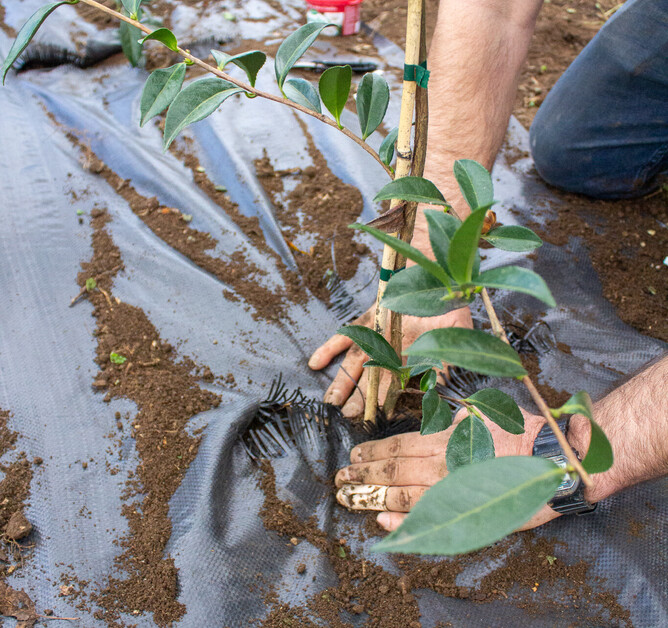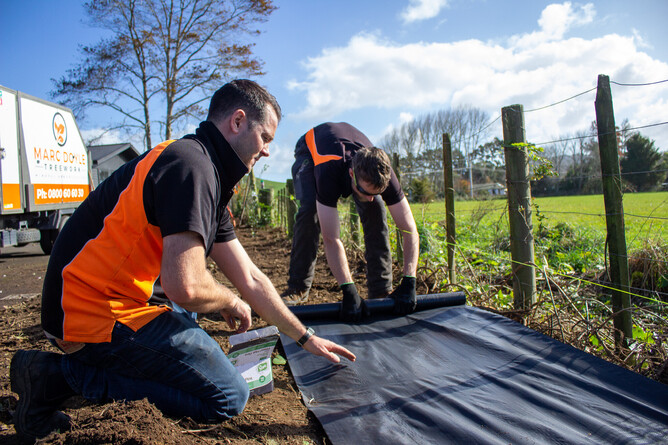How Waterlogged Soil Affects Young Plants
Lack Of Oxygen:
When soil becomes waterlogged, the excess water replaces the air present in the soil, leaving the roots deprived of oxygen. Oxygen is essential for respiration and nutrient uptake in plants. Without sufficient oxygen, the roots cannot function properly, resulting in reduced growth. As a result, young trees and plants may experience stunted development and weak root systems.
Respiration in plants involves using the sugars produced during photosynthesis plus oxygen to produce (NPTC) energy for the plants growth. Without oxygen in the soil, respiration cannot occur. Root Rot: Waterlogged conditions create an ideal environment for certain soil-borne pathogens, particularly those that thrive in anaerobic (oxygen-deprived) conditions. These pathogens can attack and infect the roots, leading to root rot. Root rot causes the roots to decay, resulting in poor nutrient absorption and weakening of the overall plant structure. The symptoms include wilting, yellowing leaves, and ultimately, the death of the plant.
Nutrient Imbalance:
Waterlogged ground can disrupt the nutrient balance within the soil. Excessive water can wash away essential nutrients, such as nitrogen, phosphorus, and potassium, which are crucial for plant growth. Additionally, waterlogged conditions often lead to a decrease in soil pH, making it difficult for plants to access certain nutrients. Consequently, young trees and plants may suffer from nutrient deficiencies, leading to stunted growth, yellowing leaves, and reduced vigor.
Impaired Water Uptake:
Ironically, although waterlogged ground is characterized by excess water, plants may struggle to absorb and utilize it effectively. When soil is saturated, it creates a physical barrier that prevents roots from taking up water efficiently. The roots may become waterlogged themselves, leading to oxygen deprivation and reduced water uptake. Consequently, young trees and plants may experience drought-like symptoms, such as wilting, despite being surrounded by excess water. We see this periodically in the Waikato. Concerned clients sometimes love their trees into poor health by overwatering during a drought. We recommend keeping the soil around your trees moist but not wet. Even during dry periods, watering every 2-3 days for 5 minutes can be more than enough water for a small-medium size tree.
Increased Susceptibility to Diseases:
Waterlogged conditions weaken the overall health of young trees and plants, making them more vulnerable to various diseases. Fungal pathogens, in particular, thrive in moist environments and can cause diseases such as damping-off, leaf spot, and blights. Weakened plants are also more susceptible to insect infestations, further hampering their growth and survival.
Waterlogged ground has a significant impact on the growth and development of young trees and plants. The lack of oxygen, root rot, nutrient imbalances, impaired water uptake, and increased susceptibility to diseases all contribute to reduced vigor and stunted growth. As gardeners and lovers of trees and plants, it is important to recognize the signs of waterlogging and take appropriate measures to mitigate the issue. These include ensuring you have an adequate drainage system set up for both the surface and sub-surface. This can be done by a professional or yourself, just be sure to create a path for the water to escape from your plants. Another great way to protect your plants from waterlogging is by creating raised beds in your gardens. This will allow the water to drain off, rather than flood your plants. It is also important to consider when you are watering your plants as if you have had a lot of rain, it is unlikely that you will need to water your plants that day.
Get in touch with the team today if this is an issue you’ve been struggling with.



